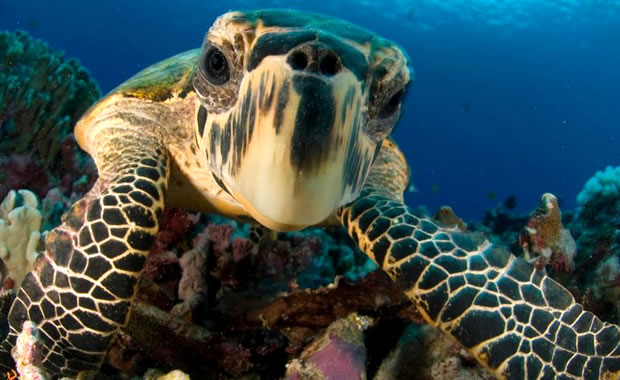Creature Profile
The Steller sea-lion is the largest of all seals and sea-lions. Adults males can reach up to 10.5 feet in length and weigh over 2400 lb, and they have large, muscular necks and shoulders. They also have long coarse hair which resembles the mane of African and Asian lions, giving them their name. Females are much smaller than males and can reach up to 9.5 feet and weigh over 750 lb. They have long flippers, and their coats are tan to reddish-brown in color with darker underparts. When underwater, their coats appear darker. Males can live up to 20 years, and females live ten years longer.
Steller sea-lions are both land and sea creatures, and they prefer colder waters. When not in the water, adults can mostly be found on rock shelves, ledges and sand beaches where they gather to breed and give birth. When ready to rest, sunbathe, or take refuge, they travel to nearby haulout sites where they may remain throughout the year. These haulouts and rookeries are usually found on remote islands where access by predators is limited. Steller sea-lions eat a wide variety of marine life, such as pollock, flounder, salmon, squid, and other small seal species, and they prefer to feed at night. Food is caught by diving into the ocean, and the deepest dive by a sea-lion is recorded as 480 feet.
Breeding occurs from mid-May to mid-July. Dominant males arrive early to the rookeries to establish territory. Females arrive about a week later and mate with whatever male controls the territory that they choose to breed in. Males will mate with 3 to 20 females total. Females give birth to only one pup after a gestation period of 11.5 months, and the pups remain with the mother for several years.
Steller sea-lion numbers have declined because of accidental capture in fishnets, loss of food source to fishermen, and hunting. Some are shot each year by fishermen who consider them competition or pests to the fishing industry. This species is now legally protected by the United States, and intentional killing of any Steller sea-lion is prohibited.
Wikipedia Article

|
Wikipedia Article Copyright Notice: This article is licensed under the GNU Free Documentation License. It uses material from the Wikipedia article "Steller sea lion". |
May 9, 2017
Glenn, C. R. 2006. "Earth's Endangered Creatures - Steller Sea-lion Facts" (Online). Accessed 10/22/2024 at http://earthsendangered.com/profile.asp?sp=826&ID=9.
Need more Steller Sea-lion facts?





